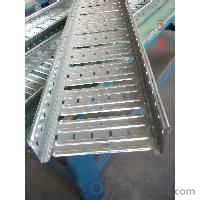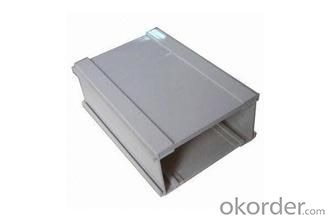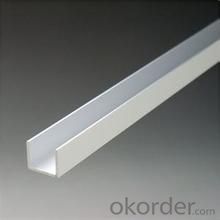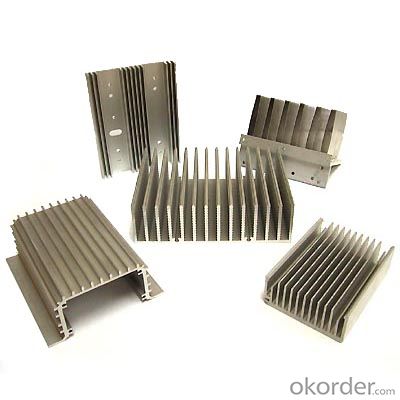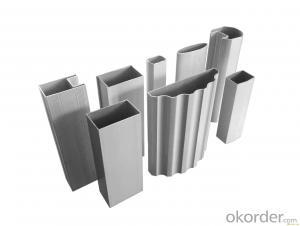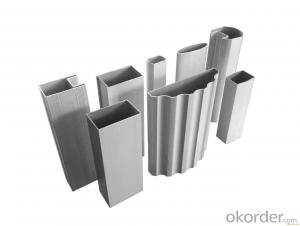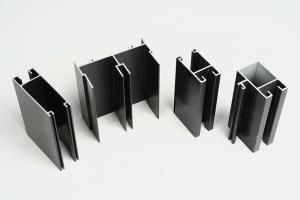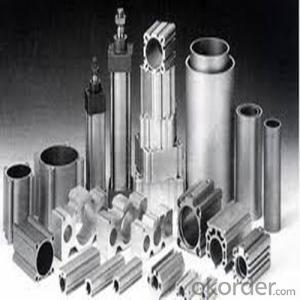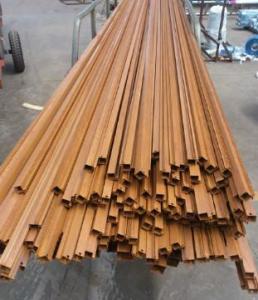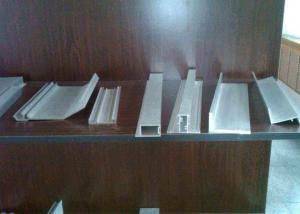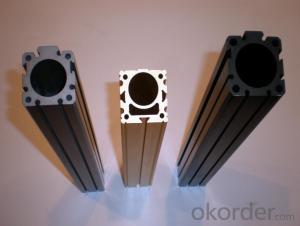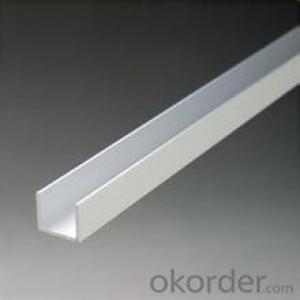Extruded Aluminum Tubing Profiles for Aluminium Profile Windows & Doors Extrusion
- Loading Port:
- China Main Port
- Payment Terms:
- TT OR LC
- Min Order Qty:
- -
- Supply Capability:
- -
OKorder Service Pledge
OKorder Financial Service
You Might Also Like
Aluminium profile
1) Alloy: AA6061, AA6063
2) Temper: T5, T6
3) Series of surface treament:
1. Mill Finished
2. Anodizing: Silver, champagne, light bronze, dark bronze, black, light titanium, dark titanium.
3. Electrophoretic Coating: Silver, champagne, bronze, black, light bronze, dark bronze.
4. Electrostatic Color Powder Coating: Normal color, special color.
5. Fluorocarbon Powder Spraying: Normal color, special color.
6. Wood Grain Coating: Import paper, domestic paper.
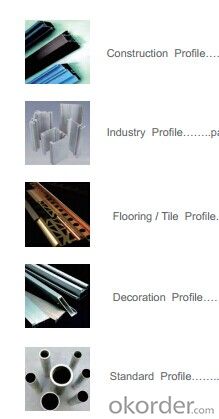
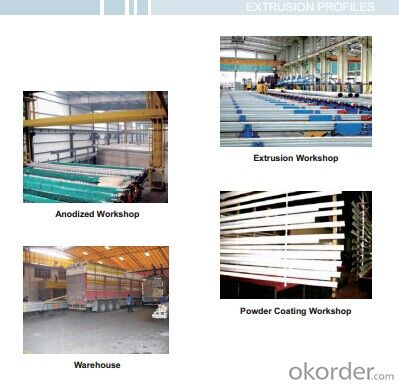
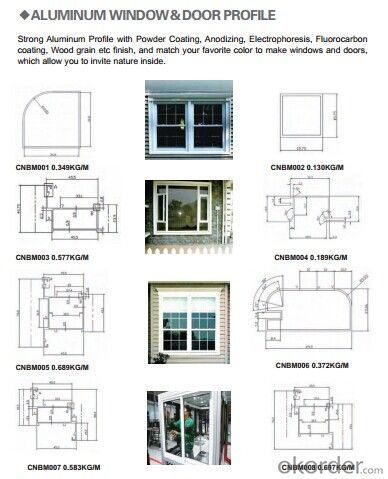
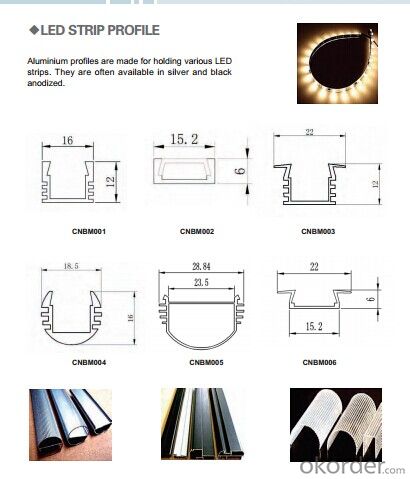
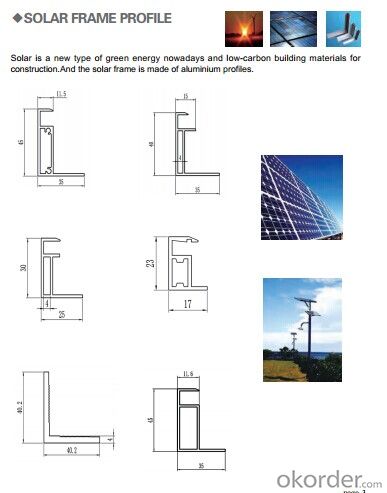
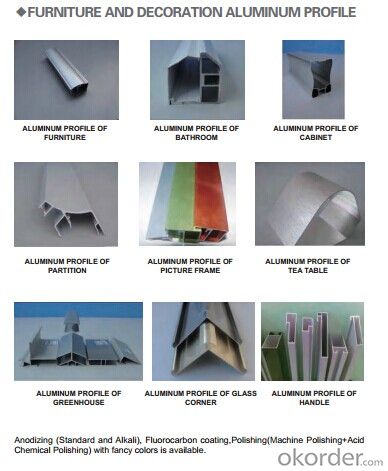
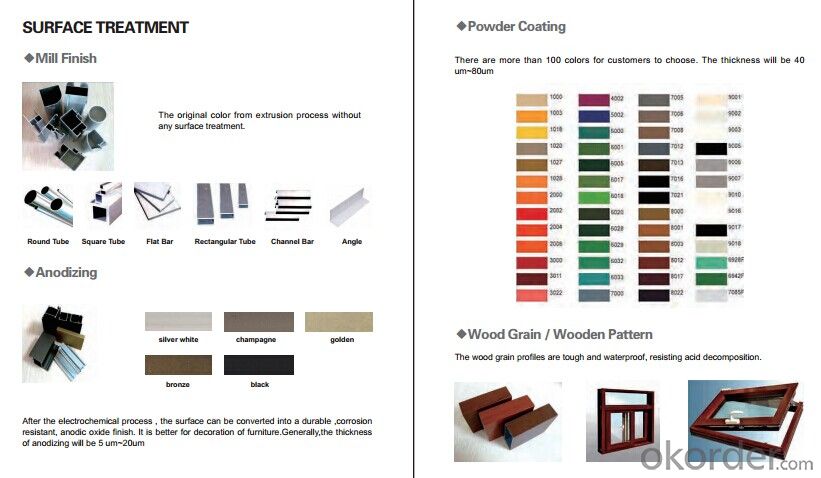
- Q: Are aluminum profiles suitable for bathroom fittings and accessories?
- Yes, aluminum profiles are suitable for bathroom fittings and accessories. Aluminum is a corrosion-resistant material that can withstand moisture and humidity in a bathroom environment. Additionally, aluminum profiles offer versatility in design, durability, and are lightweight, making them an ideal choice for bathroom fittings and accessories.
- Q: Can aluminum profiles be used in the construction of stadium seating systems?
- Indeed, stadium seating systems can utilize aluminum profiles for their construction. Aluminum, being both lightweight and long-lasting, is frequently employed in a multitude of construction applications, including stadium seating systems. It presents numerous benefits, such as resistance to corrosion, a high strength-to-weight ratio, and ease of fabrication. By customizing and assembling aluminum profiles, seating structures that are sturdy, stable, and aesthetically pleasing can be easily created. Moreover, due to its lightweight nature, aluminum allows for simpler installation and transportation, making it a financially prudent choice for stadium seating systems. All in all, when considering their durability, versatility, and strength, aluminum profiles emerge as an appropriate selection for constructing stadium seating systems.
- Q: This question asks for a list of various aluminum profiles that are utilized in the construction of building facades and cladding systems.
- <p>Aluminum profiles for facades and cladding systems come in various types, each serving specific purposes in construction. Common types include: 1. <strong>Aluminum Extrusions</strong>: Used for structural support and can be customized for specific design requirements. 2. <strong>Aluminum Channels</strong>: Often used for attaching panels or as a part of the support structure. 3. <strong>Aluminum Angles</strong>: Provide corner support and reinforcement. 4. <strong>Aluminum Flat Bars</strong>: Used for horizontal or vertical support in facade systems. 5. <strong>Aluminum Tubes</strong>: Can be used as a decorative element or for structural reinforcement. 6. <strong>Aluminum Louvers</strong>: Designed for sun shading and ventilation. 7. <strong>Aluminum Panels</strong>: Can be flat or profiled, used for the outer layer of the facade. 8. <strong>Aluminum Trims and Mouldings</strong>: Used for finishing and detailing around windows, doors, and edges. Each type is chosen based on the architectural design, structural requirements, and aesthetic preferences.</p>
- Q: Changhe brand aluminum can?
- Profile is not bad, but visibility is not too large, the whole is still very good, cost-effective
- Q: How to distinguish aluminum alloy series?
- The classification of aluminum alloy profile series has different classification results according to different classification standards.First, the use can be divided into the following categories:1. doors and windows of the construction of aluminum windows and doors (divided into two types of doors and windows and curtain wall).2. aluminum alloy shelf aluminum profiles, they are different from the shape of the cross-section. But they are produced by hot extrusion.3. aluminum industry: mainly used in automation equipment, sealing cover skeleton and the custom mold machinery and equipment according to their own requirements, such as assembly line conveyor belt, hoisting machine, glue machine, testing equipment, electronic machinery industry and clean room with!Two, according to alloy classification:Can be divided into 1024, 2011, 6063, 6061, 6082, 7075 and other alloy grade aluminum profiles, of which the 6 series are the most common. Grades are different in various metal components ratio is not the same, except for the commonly used aluminum profile doors and windows such as the 60 series, 70 series, 80 series, 90 series, curtain wall series aluminum profile, aluminum industry has no clear distinction model, most manufacturers are in accordance with the actual processing of customer drawings.Three, according to surface treatment requirements classification:1. anodized aluminum2. electrophoresis coating aluminum material3. powder spraying aluminum material4. wood grain transfer aluminum5., light aluminum (divided into mechanical polishing and chemical polishing two), including chemical polishing costs
- Q: How do aluminum profiles contribute to sustainable infrastructure development?
- Various ways exist in which aluminum profiles contribute significantly to the promotion of sustainable infrastructure development. To begin with, aluminum, being a lightweight material, requires less energy for transportation and installation when compared to heavier materials like steel. Consequently, this reduces greenhouse gas emissions and the overall carbon footprint associated with construction projects. In addition, aluminum profiles possess exceptional durability and corrosion resistance, enabling them to withstand harsh environmental conditions and prolong the lifespan of infrastructure projects. As a result, the frequency of repairs and replacements is reduced, leading to a decrease in waste generation and resource consumption. Moreover, aluminum is a material highly amenable to recycling, as it can be recycled infinitely without losing its original properties. This fosters a circular economy by minimizing the necessity for primary aluminum production and reducing the demand for raw materials. Additionally, the recycling process for aluminum requires significantly less energy compared to primary production, resulting in decreased energy consumption and lower emissions. Furthermore, aluminum profiles offer design flexibility and compatibility with diverse construction methods, thereby permitting the implementation of innovative and sustainable infrastructure solutions. They can be readily integrated into energy-efficient systems, such as solar panels or LED lighting, to further enhance sustainability. On the whole, the incorporation of aluminum profiles in infrastructure development contributes to the creation of a more sustainable built environment by reducing energy consumption, minimizing waste generation, promoting recycling, and enabling the implementation of energy-efficient solutions.
- Q: How do aluminum profiles compare to other materials used for construction and manufacturing?
- Aluminum profiles offer numerous advantages compared to other materials used in construction and manufacturing. Firstly, aluminum is lightweight yet strong, making it easier to handle and transport while maintaining structural integrity. Additionally, aluminum profiles are highly corrosion-resistant, making them suitable for outdoor and marine applications. Furthermore, aluminum is non-combustible, providing a significant safety advantage. Moreover, aluminum profiles are versatile and can be easily customized to meet specific design requirements. Lastly, aluminum is highly recyclable, making it a sustainable choice for environmentally conscious projects.
- Q: What are the electrical insulation properties of aluminum profiles?
- Compared to plastics or ceramics commonly used in electrical applications, aluminum profiles exhibit relatively low electrical insulation properties due to their high conductivity. This attribute allows for the easy flow of electrical current. Nevertheless, with proper precautions, aluminum profiles can still be effectively utilized in electrical applications. Anodizing or coating the profiles with insulating materials like epoxy or polyurethane can significantly enhance their insulation capabilities. These coatings establish a barrier between the aluminum and the electrical current, minimizing the risk of conductivity. Moreover, aluminum profiles can be combined with other insulating materials to achieve the desired level of electrical insulation. For instance, in electrical wiring systems, aluminum conductors are frequently paired with insulating materials such as PVC or cross-linked polyethylene to ensure reliable insulation. It is crucial to recognize that while aluminum profiles may possess lower electrical insulation properties compared to other materials, they do offer other advantageous characteristics like high strength, lightweightness, and corrosion resistance. Hence, careful consideration needs to be given to the specific application and electrical requirements before selecting aluminum profiles as an electrical insulation material.
- Q: Are aluminum profiles suitable for medical equipment and devices?
- Yes, aluminum profiles are suitable for medical equipment and devices. Aluminum offers several advantages such as lightweight, durability, corrosion resistance, and ease of fabrication. These properties make it ideal for medical equipment and devices that require strength, precision, and cleanliness. Additionally, aluminum profiles can be easily sterilized, making them suitable for use in healthcare settings.
- Q: How many tons of aluminum can be produced by a ton of aluminium ingots?
- Firstly, according to the requirements of a ton of aluminum ingot made of different aluminum alloy rods, concrete can output many aluminum rods must be based on the company's standard, but personally think that a ton of aluminum rod is absolutely not up to a ton of waste in the section product, because in the process of consumption, waste can not be calculated in the product section in.
Send your message to us
Extruded Aluminum Tubing Profiles for Aluminium Profile Windows & Doors Extrusion
- Loading Port:
- China Main Port
- Payment Terms:
- TT OR LC
- Min Order Qty:
- -
- Supply Capability:
- -
OKorder Service Pledge
OKorder Financial Service
Similar products
Hot products
Hot Searches
Related keywords




